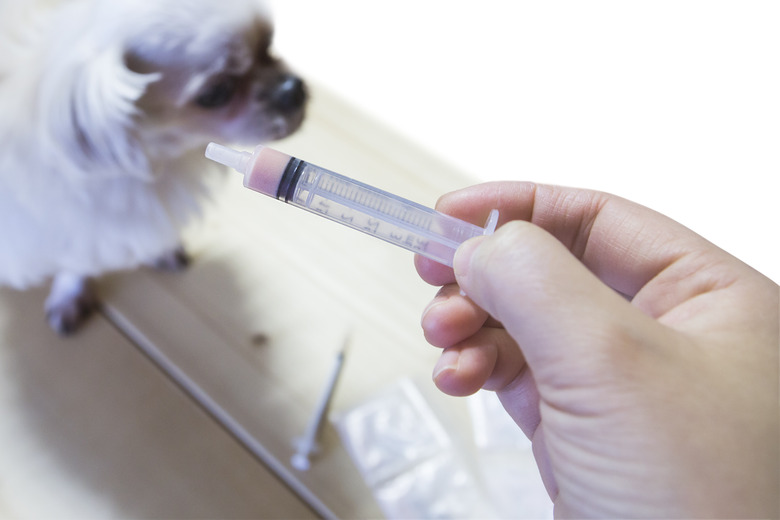How To Use Human Meloxicam For Dogs
Ask any person with osteoarthritis and they'll tell you that it hurts. Dogs would tell you the same thing if they could talk. Even if your best friend can't tell you he's in pain, you're pretty likely to notice if your pooch is acting like his joints are aching. One way you can help him is to give him medication like Meloxicam to ease the pain.
What is Meloxicam?
What is Meloxicam?
Meloxicam, also called Metacam, Mobic, or Loxicom depending on the manufacturer, is a nonsteroidal anti-inflammatory osteoarthritis drug used for both humans and dogs. It reduces the pain, stiffness, and inflammation associated with the condition. It may also be prescribed to dogs to ease pain and swelling after a surgical operation.
Mobic is the name brand of the drug and is still technically only available for human prescriptions. However, the generic versions, called Meloxicam or Metacam, can be prescribed to a pet by a veterinarian. While Mobic is only for humans, and Meloxicam and Metacam are for humans or dogs, Loxicom is an oral suspension, or liquid, formula of the drug only for dogs.
Giving Meloxicam/Metacam to dogs
Giving Meloxicam/Metacam to dogs
While the drug itself is the same when given to humans, the dosage is drastically different. The smallest human dosage of Mobic is a 7.5 mg tablet. Only a quarter of the tablet is enough for a dog weighing 45 pounds. If you give a dog a whole Mobic tablet, your dog would almost certainly overdose. Loxicom, Metacam, and Meloxicam for dogs is sold as a liquid because it makes administering the right dosage a lot easier, which keeps your dog safe. While a very large dog may technically take a portion of a tablet safely, getting an accurate dosage this way would still be very difficult. You should never give your dog medication without first getting a prescription from a vet, and a vet would not prescribe Mobic for dogs since it is only made for humans.
Metacam should only be given to a dog after getting a veterinary prescription, and your vet should give you instructions on proper dosage and administration techniques. Generally, the initial dosage is 0.09 to 0.1 mg per pound of weight. After the first day, this should be decreased to 0.045 to 0.0.5 mg per pound of body weight.
The drug should be administered in a dosing syringe, and while it may be administered directly into the mouth of a larger dog, it should only be given indirectly to smaller dogs by putting it in their food in order to avoid an overdose.
Metacam for dogs side effects
Metacam for dogs side effects
Like all prescriptions, Loxicom/Meloxicam/Metacam for dogs may cause side effects. The most common side effects are vomiting and decreased appetite. Call your vet immediately if you notice other side effects, including changes in bowel movements, changes in behavior, jaundice, increased drinking, changes in urination, skin irritation, and unexpected weight loss. The most serious side effects include stomach ulcers, unusual bleeding, and loss of kidney function or kidney failure. You should talk to your vet about any side effects before discontinuing use.
Signs of overdose
Signs of overdose
When administered properly with an oral syringe, chances of overdose should be minimal. An overdose can be deadly to a dog, though. If you suspect your dog has overdosed after taking Meloxicam, Metacam, or Loxicom for dogs, look for the following symptoms: lost appetite, diarrhea, vomiting, dark or tarry stool, increased urination, headache, increased thirst, pale gums, jaundice, lethargy, fast or heavy breathing, poor coordination, seizures, or behavior changes. Visit the local emergency veterinary clinic or call the pet poison helpline at (855) 213-6680 if you notice any of these symptoms and believe your dog may have received too much medication.
Always check with your veterinarian before changing your pet's diet, medication, or physical activity routines. This information is not a substitute for a vet's opinion.
